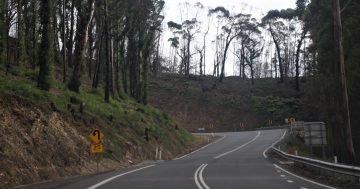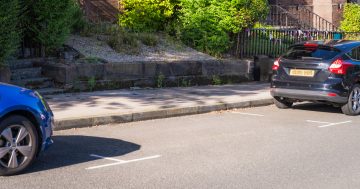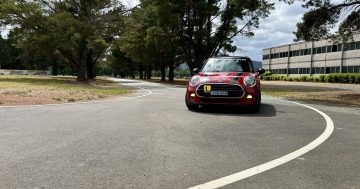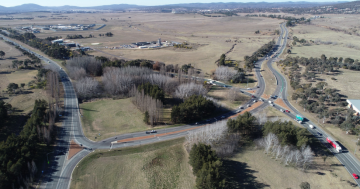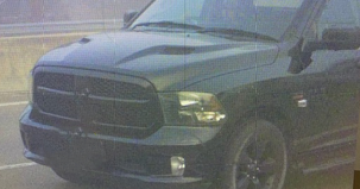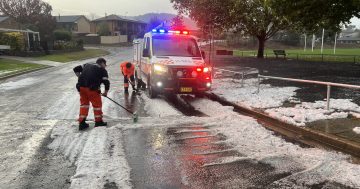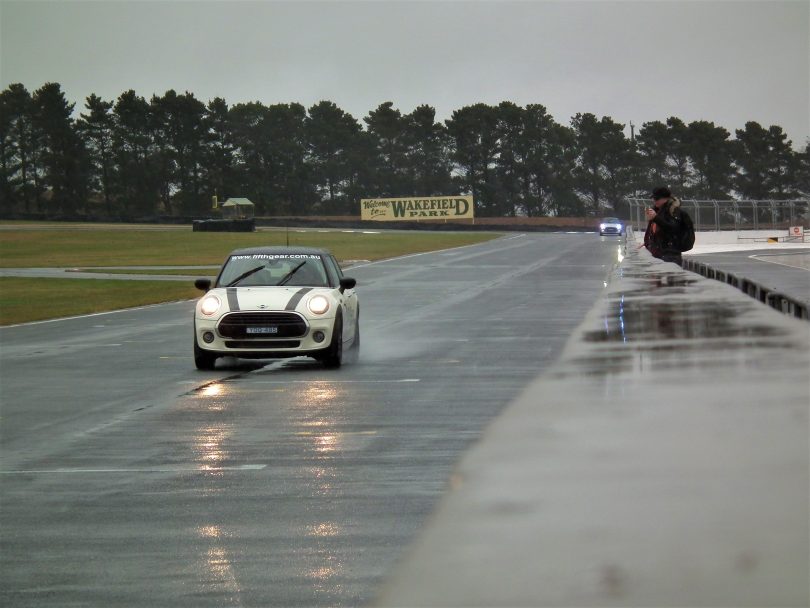
Fifth Gear Motoring driver training at Wakefield Park race track, near Goulburn. Photo: James Coleman.
Ten lives have already been lost on ACT roads this year. Now with cold, wet and snowy weather setting in for winter, the tarmac is set to become even more dangerous.
Here are 10 top tips for keeping you safe on the roads this winter.
1. Check your tyres
Your car is connected to the safe and solid earth with four small patches of rubber. That’s it.
The grooves in these tyres are designed specifically to disperse water, but without them, your car becomes more like a jet ski in the wet.
“The legal limit for the depth of these grooves is 1.5 millimetres, but if you do push your tyre to that sort of life span, that means you can only cut through 1.5 mm of water depth on the road,” says Daniel Flanagan, a driver trainer with Fifth Gear Motoring who is often found in the passenger seat of a branded Mini at defensive and advanced driver training courses.
“Take a motorsport tyre, for example. It has no tread whatsoever for extra grip in the dry, but when it rains, they’re completely useless.”
It’s the same for your tyres, too.
2. Avoid the ‘tram tracks’
Tram tracks? No, not those trams tracks (but you shouldn’t drive on those, either). Daniel defines tram tracks as the furrows in the road caused by cars and trucks in a lane. In the wet, these can turn into mini rivers.
“It often makes sense to travel a foot to the left or right of these tram tracks and find more grip where the surface of the road isn’t as worn out,” he says.
“Your tyres will get a better purchase on the road because there’s less standing water.”
3. Be gentle
“It all comes down to weight transfer,” Daniel says.
You’ll feel it yourself. When you brake, the car’s weight moves forward; when you accelerate, it goes backward; and when you corner, it goes sideways. In the dry, you’re much less likely for this movement to overwhelm the tyres, but in the wet, the equation changes.
“We should reduce our inputs as a driver by 30 per cent. It’s a pretty steady figure and means that we expect a 30 per cent loss of grip in wet weather.”
This means braking earlier, taking off slower, and entering and exiting corners slower.
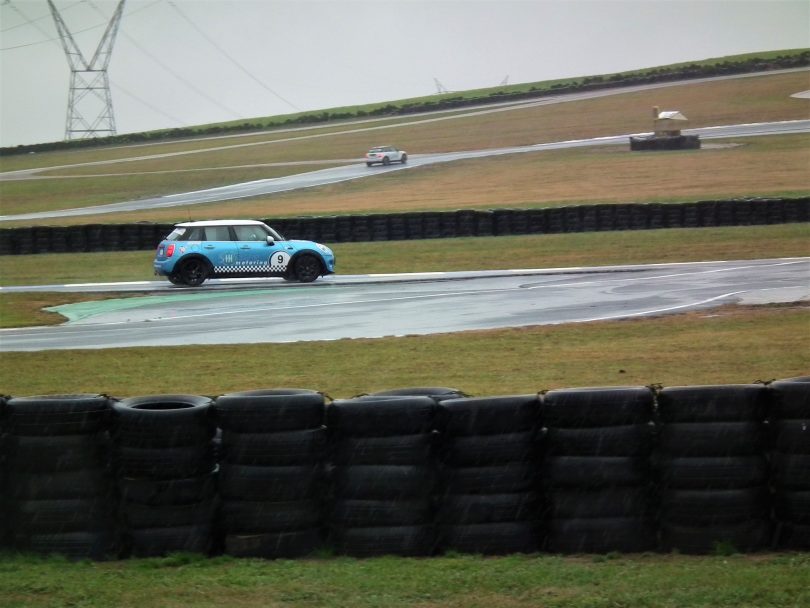
Go easier in the rain by 30 per cent. Photo: James Coleman.
4. Don’t tailgate
No matter the conditions, cars should be three seconds apart. Time how long it takes for the car in front to pass a light post, and if you’re passing the same light post before you can count to three, you’re too close. In the wet or snow, it should be even more time.
“It should be four to five seconds when you’re in slippery conditions, allowing for the loss of traction and longer time it takes to stop.”
5. De-mist your windows
To keep the bathroom from steaming up after your shower, chances are you open the window or turn on the exhaust fan. It’s the same in the car.
“Have the air-conditioning set to fresh air and all your vents open,” Daniel says.
The air-conditioning might sound counter-productive to keeping you toasty in winter, but the air coming out of the vents also contains hardly any moisture. This keeps the windows clearer for longer.
“More vision, obviously, means you’re more likely to pick up a hazard earlier, giving you more time to deal with it.”
6. Turn on your headlights
It helps if other drivers know where you are.
“Quite often on a rainy and overcast day, and you’re looking in your rear-view mirror, it’s through windows covered in rain,” Daniel explains.
“If there’s a car around you without their headlights on, chances are you aren’t going to see it.”
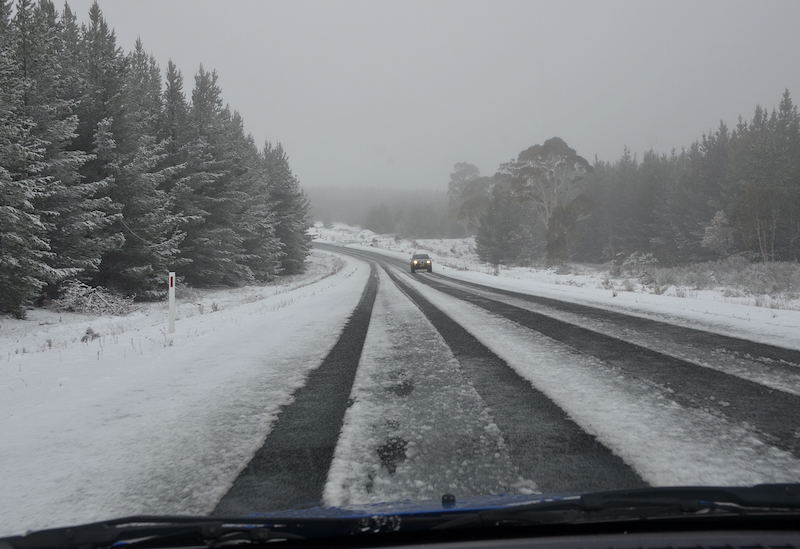
Snow falling along the Oberon Road. Photo: Leon Oberg.
7. What about the snow?
One of the key recommendations is to let out some of the air in the tyres.
“This increases the size of your tyre’s footprint on the road.”
Follow this up with a sturdy set of snow chains.
“For a lot of people, it’s an ego thing,” Daniel says. “People think that because they have a 4WD, they can persevere without fitting snow chains. To a certain degree, yes, but a tyre will only give you so much grip in the snow.”
Reducing your speed in a straight line will also improve grip. And try to avoid the soft and soggy edges of the road, too – stick to the safer, swept areas.
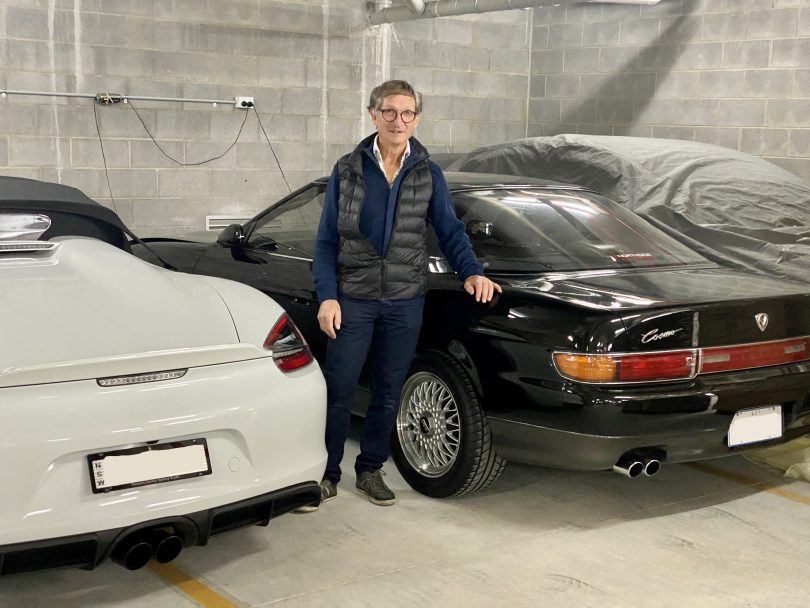
Barry Faux by his beloved Mazda Cosmo. Photo: James Coleman.
8. Trust your brakes
Barry Faux is a Canberra-based furniture designer by day but an accomplished rally driver in his spare moments. He regularly takes part in Targa Tasmania, a world-famous rally event held on the tight and slippery roads of the Apple Isle.
He says if you realise you have approached a corner with too much speed, straighten the wheel and brake hard.
“Ignore any attempt to get around the corner until you’ve washed off some speed,” he says.
Every modern car is fitted with an Antilock Braking System (ABS) to prevent the wheels from locking up and skidding during heavy braking scenarios. Barry’s advice is to not be scared of using it if you have to.
“For some reason, people often aren’t game enough to put the foot on the brake pedal hard enough, and a damp road only exacerbates this needless fear,” he says.
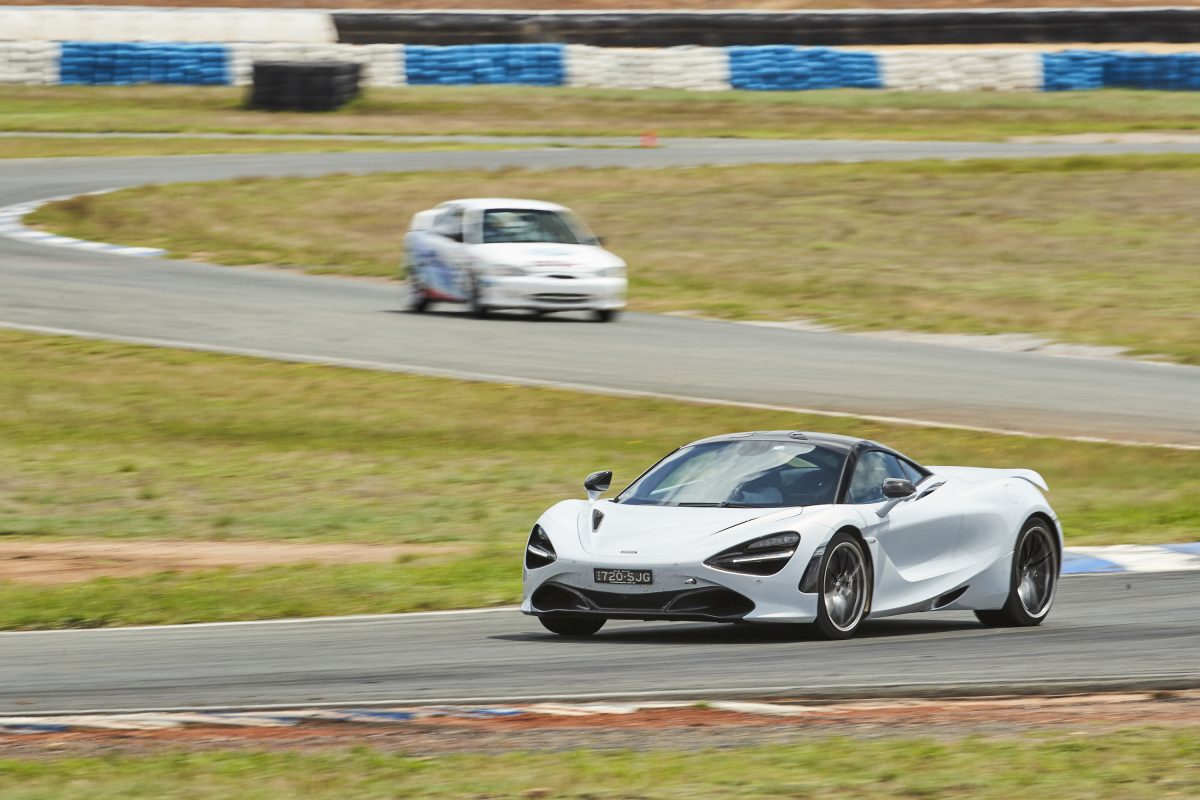
Prepare for corners. Photo: Wakefield Park.
9. If you look at it, you’ll hit it
“In rallying, you often see one car crashed on top of another car, and you know that they were looking at it,” Barry says – hence the dictum, if you look at it, you’ll hit it.
It’s a mysterious connection between the human brain and the eyes, but it definitely exists. Look at where you want to be and chances are your car will follow.
10. Pay attention
Barry’s final piece of advice is succinct: “Switch your brain on when you start the engine.”
“Most people have an accident because they’re not paying attention.
“You have to look out for the other drivers at all stages. It takes two people to create a collision. If you’re aware that someone might run into you, you’re more prepared to avoid it.”
For example, it’s good policy to always check for red-light runners at traffic lights before proceeding through your green light – it only takes a second but it could save your life.














